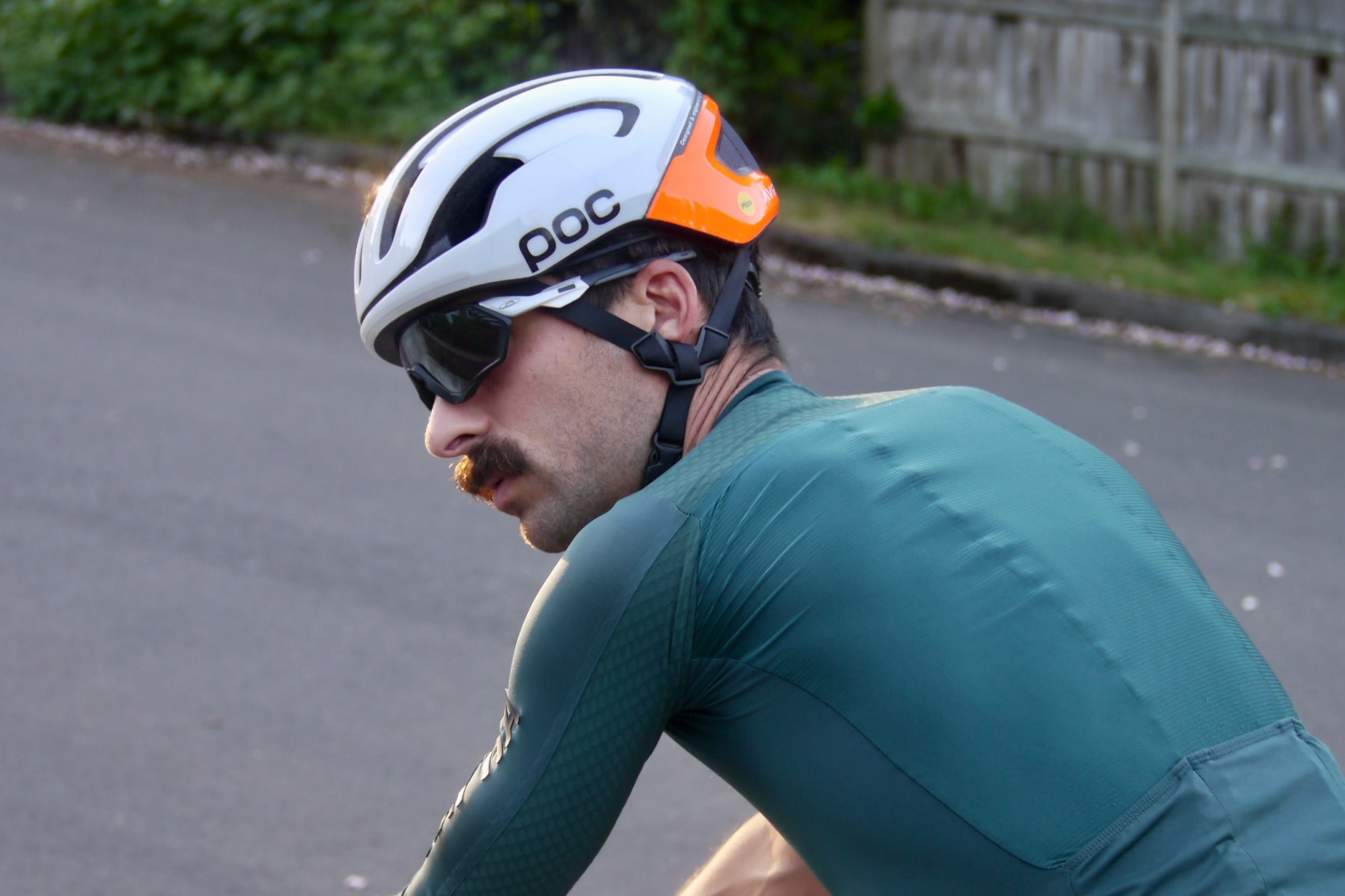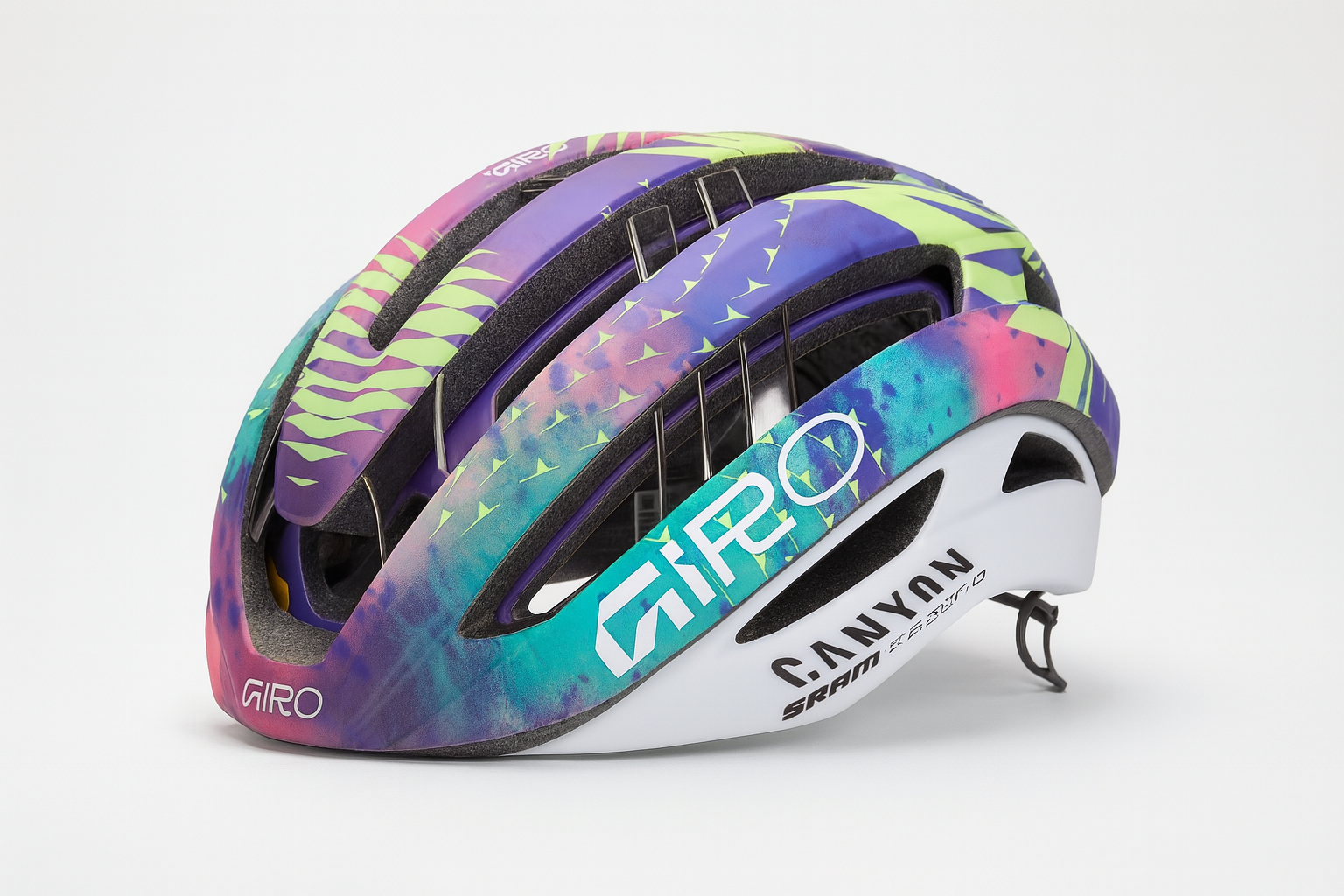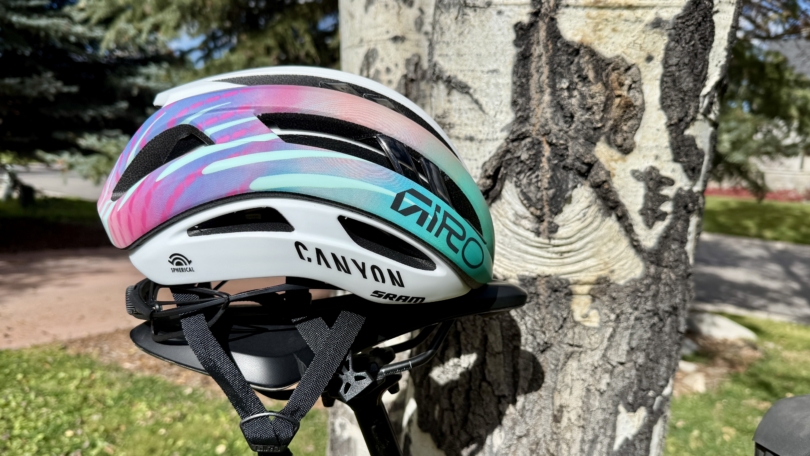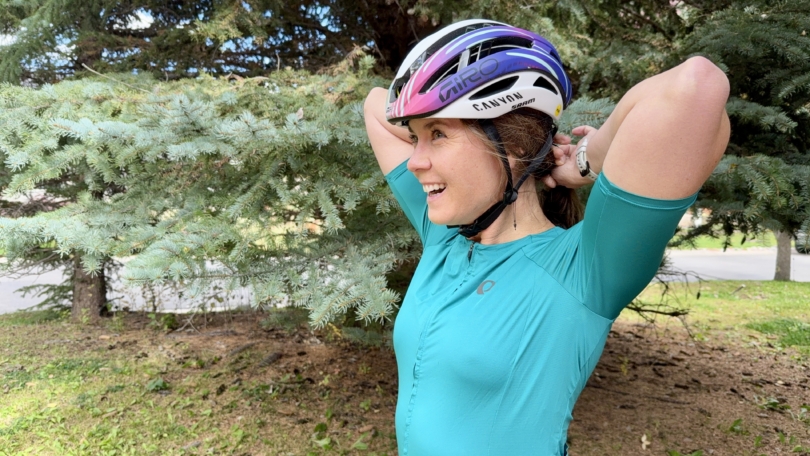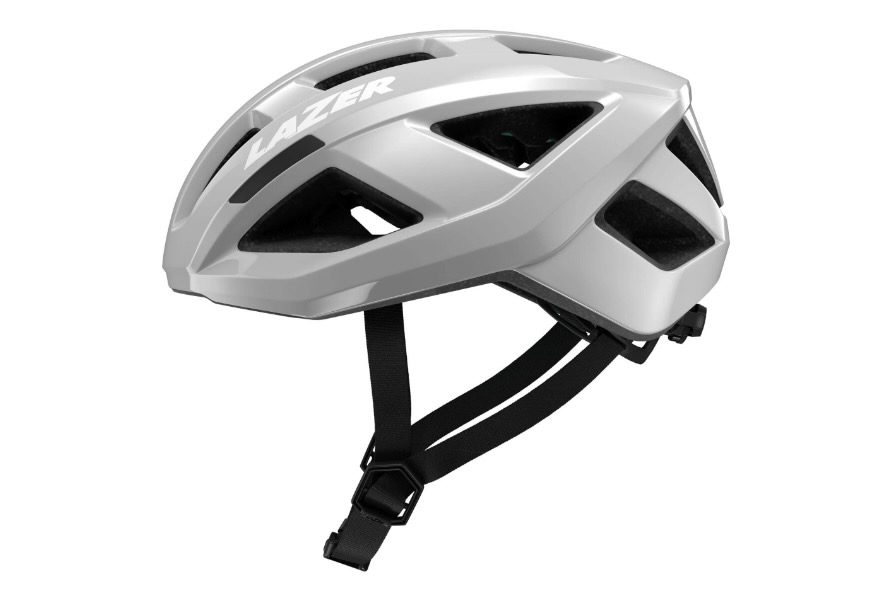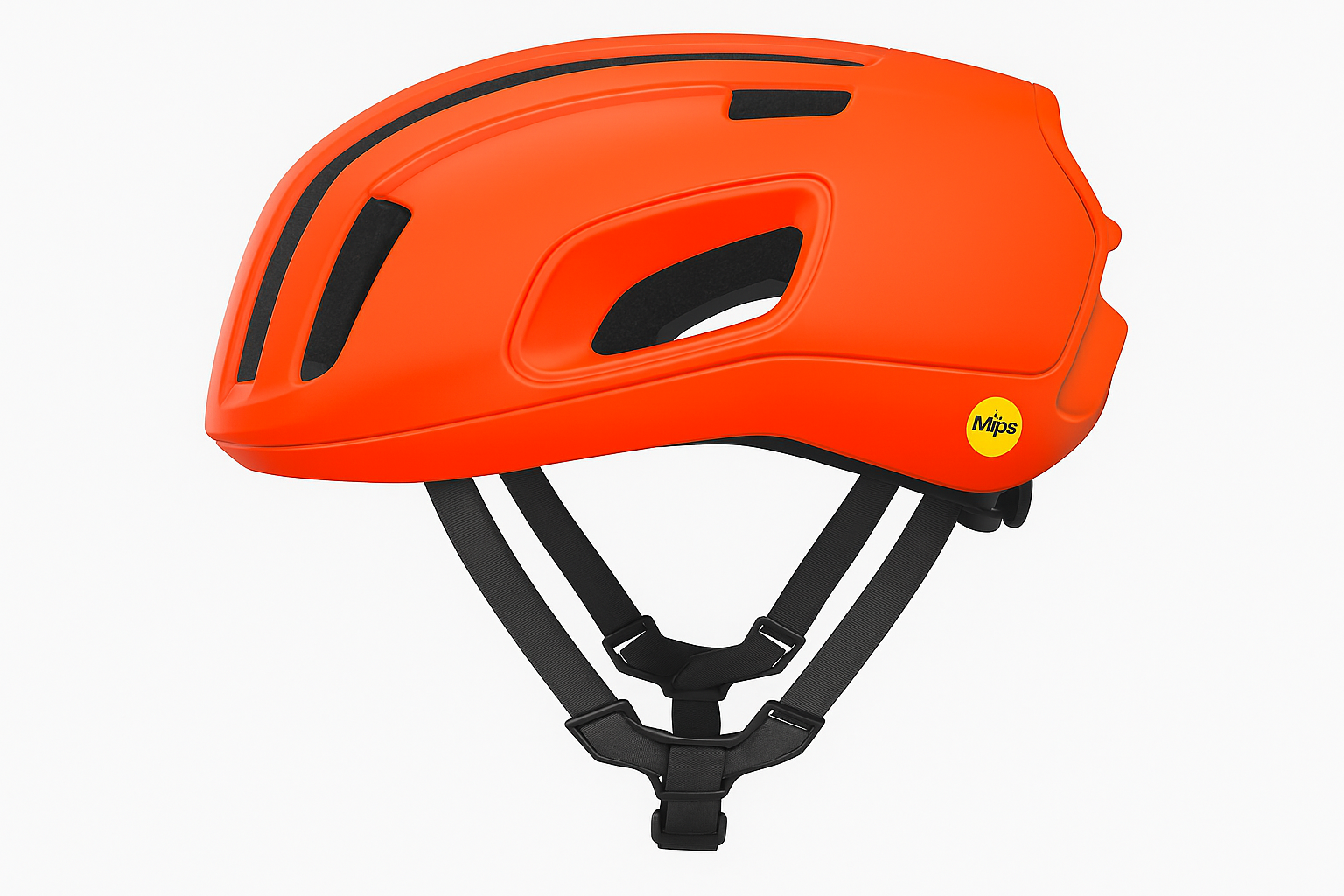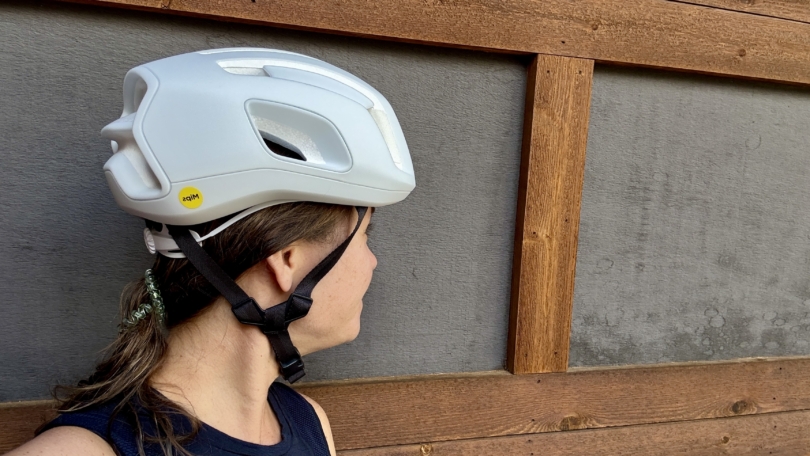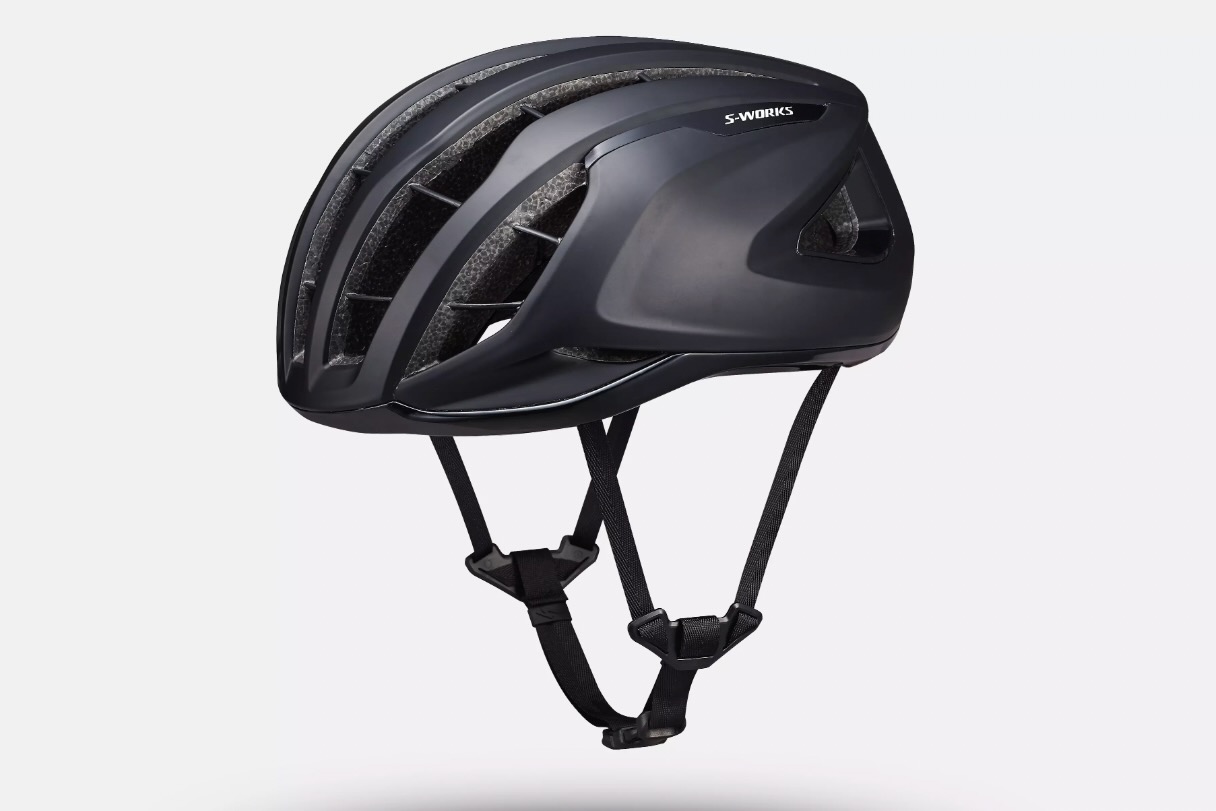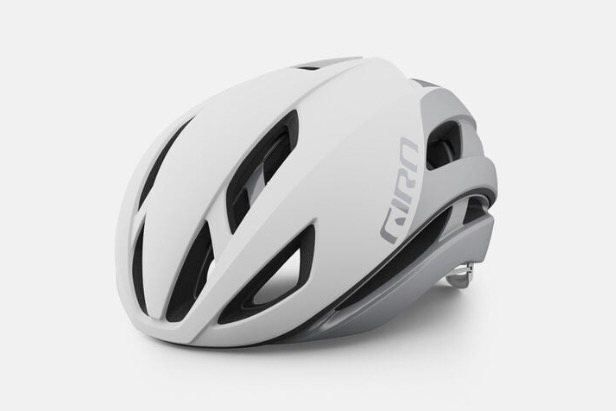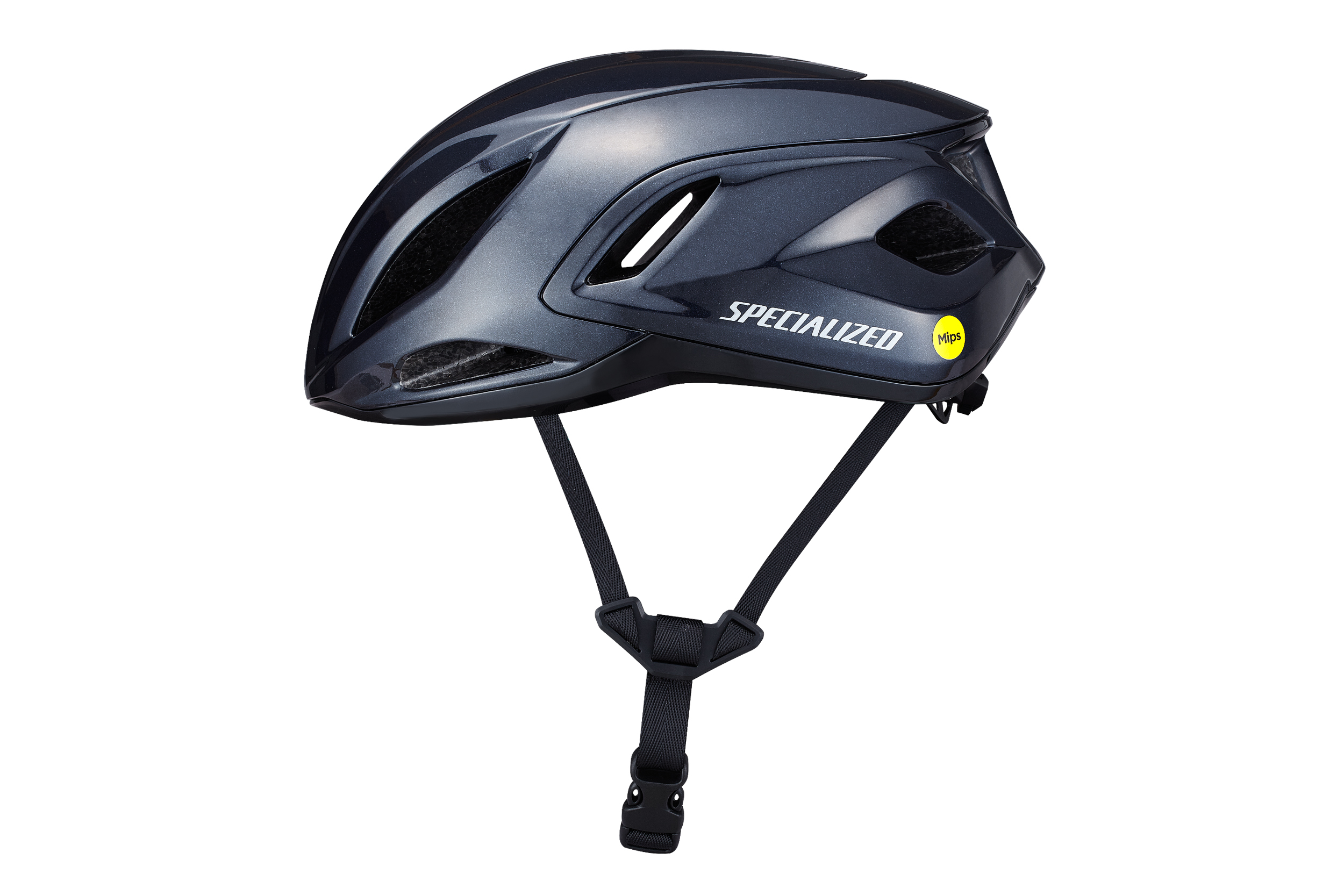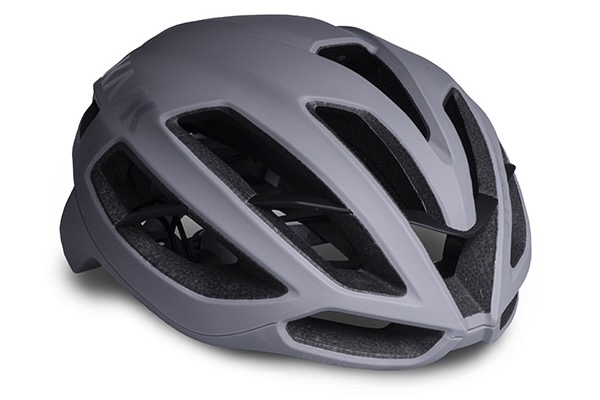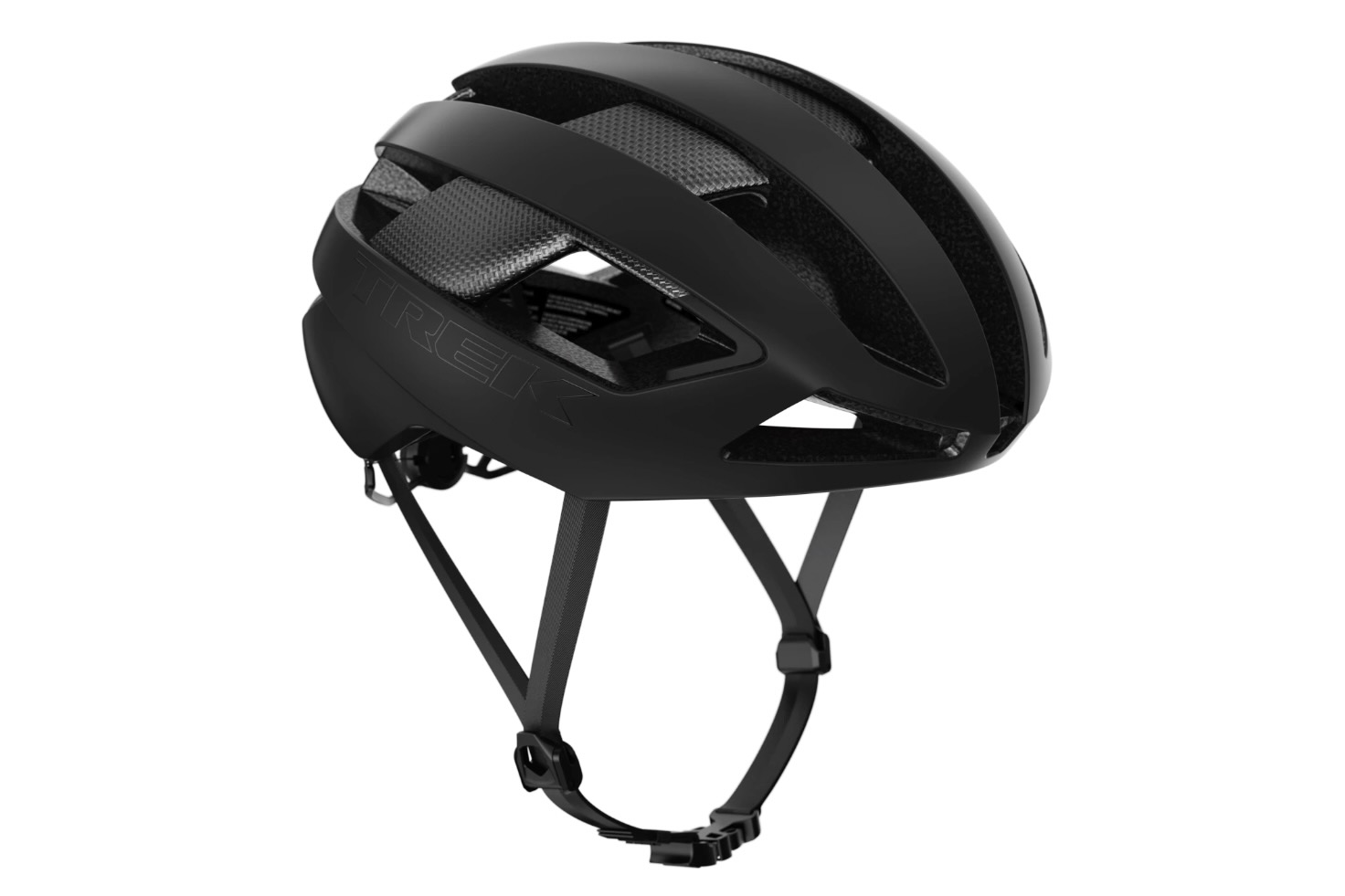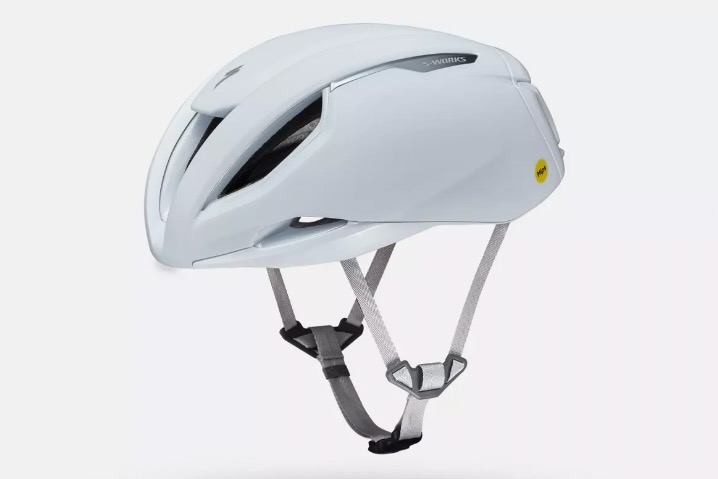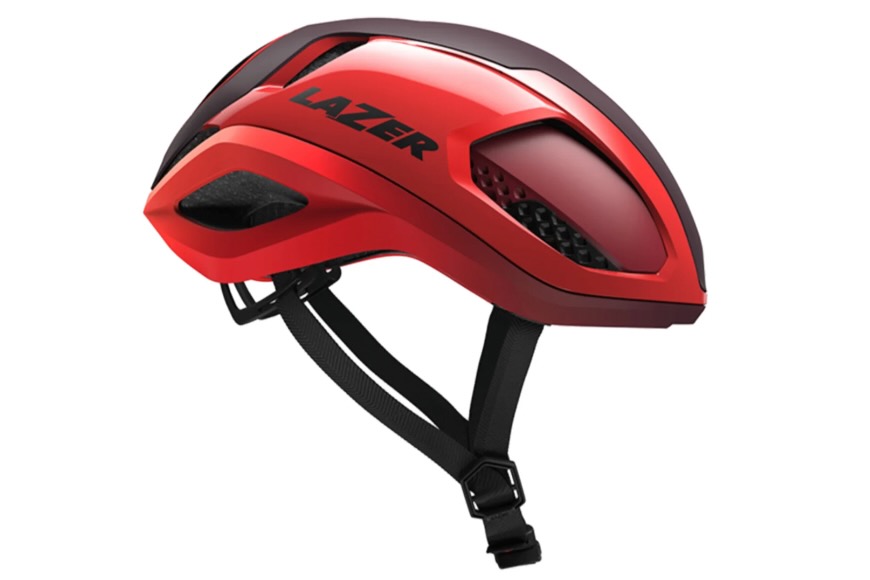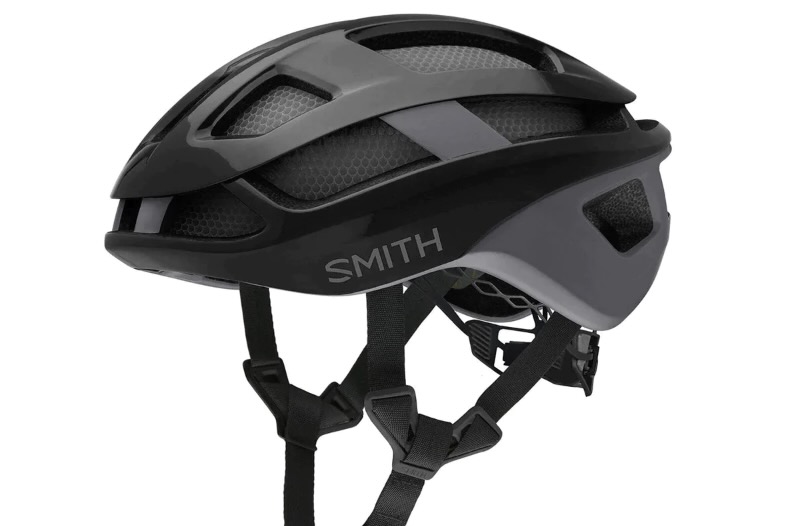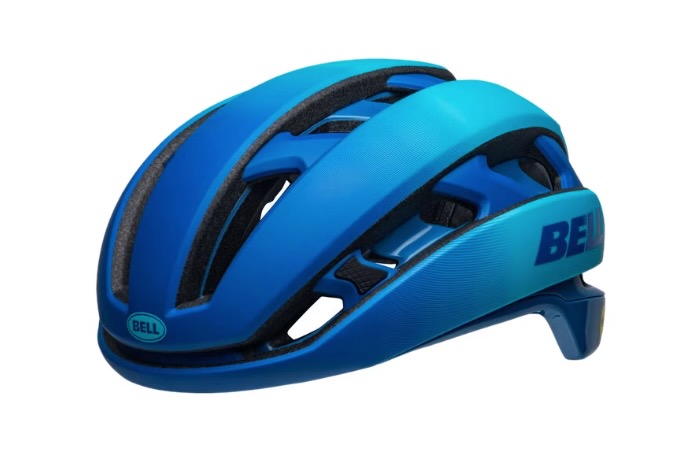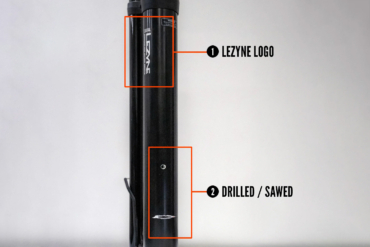Cycling is all about freedom: the speed, the rhythm, the open road. But every ride still carries risk, so nothing matters more than protecting your head.
Today’s road biking helmets aren’t just live-saving essentials. Rather, they’re sleeker, lighter, stylish, and more high-tech than ever before. This year’s POC Cytal road biking helmet comes with tons of ventilation in an aerodynamic design, but it also clocks in as the safest road biking helmet ever tested by Virginia Tech Helmet Lab. If you’re looking to save some hard-earned cash, the Lazer Tonic KinetiCore is about a third of the cost but still comes with plenty of protection against rotational impact.
Ultimately, there are a lot of options out there to keep your dome safe but a lot depends on preference. More money often means more features like ventilation, cushioning, and added safety protections. While no model will suit every single cyclist’s needs, we’ve done our best to select our favorite overall models.
Editor’s Note: We updated this guide on October 15, 2025, with the addition of the new POC Cytal road bike helmet. We also added a detailed rating metrics to each choice, making it easier to see where we come up with our final numerical score.
The Best Road Bike Helmets of 2025-2026
Giro Aries Spherical Helmet
-
Ventilation
9.3
-
Comfort
9.0
-
Weight
9.3
-
Value
8.5
- Weight: 271g (Medium)
- Rotational Impact Protection System: MIPS Spherical
- Number of vents: 24
- Available sizes: S, M, L
- Virginia Tech Helmet Safety Rating: 5-star
- Colors: Matte Ano Blue, Matte Ano Harbor Blue Fade, Matte White, Matte Black, Matte Carbon/Red, Matte Metallic Coal/Space Green
Pros
- Supremely comfortable
- Great ventilation
- Light
- Excellent coverage
- Easy eyewear storage
Cons
- Expensive
Lazer Tonic KinetiCore
-
Ventilation
6.5
-
Comfort
7.5
-
Weight
9.0
-
Value
8.0
- Weight: 240g (Medium)
- Rotational Impact Protection System: Lazer KinetiCore
- Number of vents: 18
- Available sizes: S, M, L,
- Virginia Tech Helmet Safety Rating: 5-star
- Colors: White/Orange, Matt Blue, Black/Fluo Yellow, White, Matt Black, Cosmic Berry, Red/Black
Pros
- Lighter than many helmets costing double or triple
- Great fit
- High comfort level
Cons
- Limited ventilation
- Looks a bit dull
POC Cytal
-
Ventilation
9.5
-
Comfort
9.0
-
Weight
9.0
-
Value
8.5
- Weight: 271g
- Rotational Impact Protection System: MIPS Air Node
- Number of vents: 13
- Available sizes: S, M, L
- Virginia Tech Helmet Safety Rating: 5-star
- Colors: Apatite Navy Matt, Fluorescent Orange Matt, Granite, Grey Matt, Hydrogen White, Hydrogen White Matt, Pargasite Green Matt, Prismane Red Matt, Uranium Black Matt, Uranium Black Matt/Hydrogen White
Pros
- Safest road biking helmet tested by Virginia Tech Helmet Lab
- Well-designed airflow keeps your head cool
- Balanced fit that feels comfortably snug
Cons
- Quite expensive
Specialized S-Works Prevail 3
-
Ventilation
9.0
-
Comfort
8.0
-
Weight
8.0
-
Value
8.5
- Weight: 322 g (Large)
- Rotational Impact Protection System: MIPS AirNode
- Number of vents: 25, but they are continuous channels
- Available sizes: S, M, L
- Virginia Tech Helmet Safety Rating: 5-star
- Colors: Black, White, Vivid Red, White Mountains, White/Black, Fjallraven Green, White sage Metallic
Pros
- Incredible venting
- Lightweight
- Durable polycarbonate exterior
- Fits oval heads well
Cons
- Too well-ventilated for cooler temperatures
- Somewhat narrow profile may not fit round heads well
- Sunglass storage ports are set very wide
- Expensive
Giro Eclipse Spherical
-
Ventilation
9.0
-
Comfort
9.0
-
Weight
8.5
-
Value
8.0
- Weight: 270g (Medium)
- Rotational Impact Protection System: MIPS Spherical
- Number of Vents: 14
- Available Sizes: S, M, L,
- Virginia Tech Helmet Safety Rating: 5-star
- Colors: Matte Ano Blue, Matte Black/Gloss Black, Matte Black/Red/White, Matte Charcoal Mica, Matte Light Lilac Fade, Matte White/Silver
Pros
- Aero performance in any temperature
- Excellent fit and comfort
- Less bulky and lighter than some aero helmets
Cons
- Slightly bulkier than some some non-aero options
Specialized Propero 4
-
Ventilation
8.5
-
Comfort
8.0
-
Weight
7.5
-
Value
8.5
- Weight: 340 g (Large)
- Rotational Impact Protection System: Mips Evolve Core
- Number of Vents: 12
- Available Sizes: S, M, L
- Virgina Tech Helmet Safety Rating: 5-star
- Colors: Black, White, Taupe, Hyper Dove Grey
Pros
- Lightweight
- Vents well
- Durable, high-quality construction
- Priced well below S-works models
Cons
- May not fit round heads well
Kask Protone Icon
-
Ventilation
8.5
-
Comfort
8.5
-
Weight
8.5
-
Value
7.5
- Weight: 230g (Medium)
- Rotational Impact Protection System: WG11
- Number of vents: 14
- Available sizes: S, M, L
- Virginia Tech Helmet Safety Rating: Not yet rated
- Colors: Black, Red, Gray, White, Light Blue, Olive Matte, Blue Matte, Gray Matte
Pros
- Excellent ventilation
- Very lightweight
- Low profile
- Unique styling
Cons
- Expensive
Other Road Bike Helmets We Have On Hand
-
Ventilation
8.0
-
Comfort
8.0
-
Weight
8.0
-
Value
7.5
- Weight: 240g (Medium)
- Rotational Impact Protection System: MIPS Air
- Number of vents: 16
- Available sizes: S, M, L
- Virginia Tech Helmet Safety Rating: 5-star
- Colors: Viper Red/Cobra Blood, Dark Aquatic, Black, White, Red, White/Nautical Navy
Pros
- Prodigious ventilation
- Uber-compact profile
- Liberal use of carbon fiber for crazy low weight
- Unconditional comfort guarantee
- Easy eyewear storage
Cons
- Expensive
- Not a great application of BOA
-
Ventilation
7.0
-
Comfort
8.0
-
Weight
7.0
-
Value
8.0
- Weight: 350g (Large)
- Rotational Impact Protection System: MIPS
- Number of vents: 10
- Available sizes: S, M, L
- Virginia Tech Helmet Safety Rating: 4-star
- Colors: Lead Blue Matte, Sapphire Purple Matte, Lemon Calcite Matte, Epidote Green Metallic/Matte, Uranium Black Matte, Hydrogen White, Himalayan Salt Matte, Fluorescent Orange AVIP, Cerussite Kashima Metallic/Matte
Pros
- Sleek profile
- Excellent coverage
- Reassuringly snug fit
Cons
- Slightly heavier weight
-
Ventilation
8.0
-
Comfort
8.0
-
Weight
7.5
-
Value
7.0
- Weight: 350g (Large)
- Rotational Impact Protection System: MIPS Node Air
- Number of vents: 9
- Available sizes: S, M, L
- Virginia Tech Helmet Safety Rating: 5-star
- Colors: Metallic Deep Marine, Black, White, Red, Hyper Green/Dove Grey
Pros
- Unbeatable ventilation in an aero lid
- Compatible with ANGi crash sensor
- Excellent finish quality
Cons
- Magnetic clasp is fiddly
- Expensive
- Heavier weight
-
Ventilation
8.0
-
Comfort
6.5
-
Weight
7.5
-
Value
7.5
- Weight: 285g (Medium)
- Rotational Impact Protection System: Lazer KinetiCore
- Number of vents: 10
- Available sizes: S, M, L, XL
- Virginia Tech Helmet Safety Rating: 5-star
- Colors: Black/Yellow, White/Black, Red, Matte Black
Pros
- Compact profile
- Good ventilation for an aero helmet
- Low weight
- Clean aesthetics
Cons
- ScrollSys adjustment system is difficult to operate
- Pressure points in front and rear
- Expensive
-
Ventilation
8.0
-
Comfort
6.5
-
Weight
7.5
-
Value
8.0
- Weight: 285 g (size M/L)
- Rotational Impact Protection System: MIPS Air
- Number of vents: 13
- Available Sizes: S/M, M/L, L/XL
- Virginia Tech Helmet Safety Rating: 5-stars
- Colors: Barbera metallic, bronco white, dusk, lava, lush, matte black, panther, satin white, woodland
Pros
- Excellent score in Virginia Tech testing
- Good ventilation
- Sleek looks
- Great straps
Cons
- Fairly expensive
- Narrower shell shape may not work for rounder heads
-
Ventilation
6.5
-
Comfort
8.0
-
Weight
7.5
-
Value
8.0
- Weight: 280g (Medium)
- Rotational Impact Protection System: MIPS
- Number of vents: 18
- Available sizes: S, M, L
- Virginia Tech Helmet Safety Rating: Not yet rated
- Colors: Matte Dew/Aurora/Bone, Matte Bone Gradient, Matte Stone/Moss, Poppy/Terra/Storm, Black/Matte Cement, Matte Blackout, Matte Cinder Haze, White/Matte White, Matte Neon Yellow Viz
Pros
- Forgot-it’s-even-there comfort
- Light
- Excellent coverage
- Compact profile
Cons
- Ventilation could be better
-
Ventilation
8.0
-
Comfort
8.0
-
Weight
8.0
-
Value
8.0
- Weight: 285g (Medium)
- Rotational Impact Protection System: MIPS Spherical
- Number of vents: 13
- Available Sizss: S, M, L
- Virginia Tech Helmet Safety Rating: 5-star
- Colors: Black, Blue, Green, Camo, Pink, Titanium, White/Black
Pros
- Good fit
- Good ventilation
- Excellent coverage
Cons
- Looks a lot like a XC MTB helmet
- Magnetic strap clasp is fiddly
- Big branding
Road Bike Helmet Comparison Chart
| Model | MSRP | Weight | Rotation Impact Protection System | Number of Vents | Virginia Tech Rating |
|---|---|---|---|---|---|
| Giro Aries Spherical | $350 | 275 g (size M) | MIPS Spherical | 24 | 5-star |
| Lazer Tonic KinetiCore | $80 | 240 g (size M) | Lazer KinetiCore | 18 | 5-star |
| POC Cytal | $350 | 271 g (size M) | MIPS Air Node | 13 | 5-star |
| Specialized S-Works Prevail 3 | $300 | 322 g (size L) | MIPS Air | 25 | 5-star |
| Giro Eclipse Spherical | $300 | 270 g (size M) | MIPS Spherical | 14 | 5-star |
| Specialized Propero 4 | $230 | 308 g (size M) | MIPS Evolve | 12 | 5-star |
| Kask Protone Icon | $300 | 230 g (size M) | N/A | 14 | Not rated |
| Trek Velocis MIPS | $330 | 240 g (size M) | MIPS Air | 16 | 5-star |
| POC Omne Air MIPS | $220 | 350 g (size L) | MIPS | 10 | 4-star |
| Specialized S-Works Evade 3 | $300 | 350 g (size L) | MIPS Node Air | 9 | 5-star |
| Lazer Vento KinetiCore | $300 | 285 g (size M) | Lazer KinetiCore | 10 | 5-star |
| Sweet Protection Falconer 2Vi MIPS | $250 | 285 g (size M/L) | MIPS Air | 13 | 5-star |
| Smith Trace MIPS | $285 | 280 g (size M) | MIPS | 18 | Not rated |
| Bell XR Spherical | $225 | 285 g (size M) | MIPS Spherical | 13 | Not rated |
How We Tested the Best Road Bike Helmets
For the purposes of this buyer’s guide, we rounded up 16 of the best road bike helmets available in 2025 to put through their paces in the real world. We chose a diverse selection of brands, styles, and price points with the goal of having a representative sample of the broad cycling helmet market. Testing these helmets side by side allows us to directly compare them and identify performance differences to form the basis for our recommendations.
Each model’s design and construction were closely examined before taking them out for numerous rides of varying lengths in a range of weather conditions and temperatures. While riding, we scrutinized important performance characteristics like fit, comfort, ventilation, adjustments, and features, and even though it doesn’t affect performance, we even considered each model’s style
Our Expert Testers
Review author Bennett Shane lives in Portland, OR, and has been road cycling seriously for the better part of the past two decades. After racing road and gravel for over 10 years, Bennett has traded the timing chip for long rides on lonely roads throughout the Pacific Northwest and more time with his young family.
GearJunkie contributor Heather Balogh Rochfort managed the most recent update to this guide. Balogh Rochfort lives and rides in the Roaring Fork Valley of Colorado outside of Aspen. She bought her first road bike when she was 23 (a Trek Pilot 2.0 that still sits in her garage) and used it twice before setting out on a cross-country road biking trip. She lived on her bike for four months, pedaling during the day and hiding in her tent at night. These days, she splits her time between road, gravel, and mountain biking, but has a strong affinity for pedaling along the Rio Grande bike path, a 42-mile route that runs the length of the valley.
Our Road Bike Helmet Rating System
When comparing our road bike helmets side by side, we break down our rating metrics into four specific categories. Not only does this help us create balance in our scores, but it also allows us to directly compare competitors to see which products come out on top.
Ventilation
Airflow can make or break a long ride. We evaluate how effectively each helmet moves air across the head and pushes heat outward, considering both vent design and real-world cooling on climbs and hot days. The best helmets balance deep internal channels with efficient external shaping to keep riders cool without adding drag.
Comfort
A great helmet should disappear once it’s on. We assess padding quality, strap design, adjustability, and overall fit. Pressure points, hot spots, and retention system comfort all factor in, since small differences in feel can make you miserable on all-day rides.
Weight
Every gram counts on long climbs and fast group rides. We measure each helmet’s claimed and actual weight, noting how well it balances lightweight design with protection and durability. The lightest helmets often use high-end materials and construction that contribute to both comfort and performance.
Value
Premium safety and comfort don’t always have to come at a premium price. We compare features, build quality, and performance against cost to see which helmets deliver the most for your money. Sometimes, a mid-range helmet offers nearly the same protection and ventilation as top-tier models for far less.
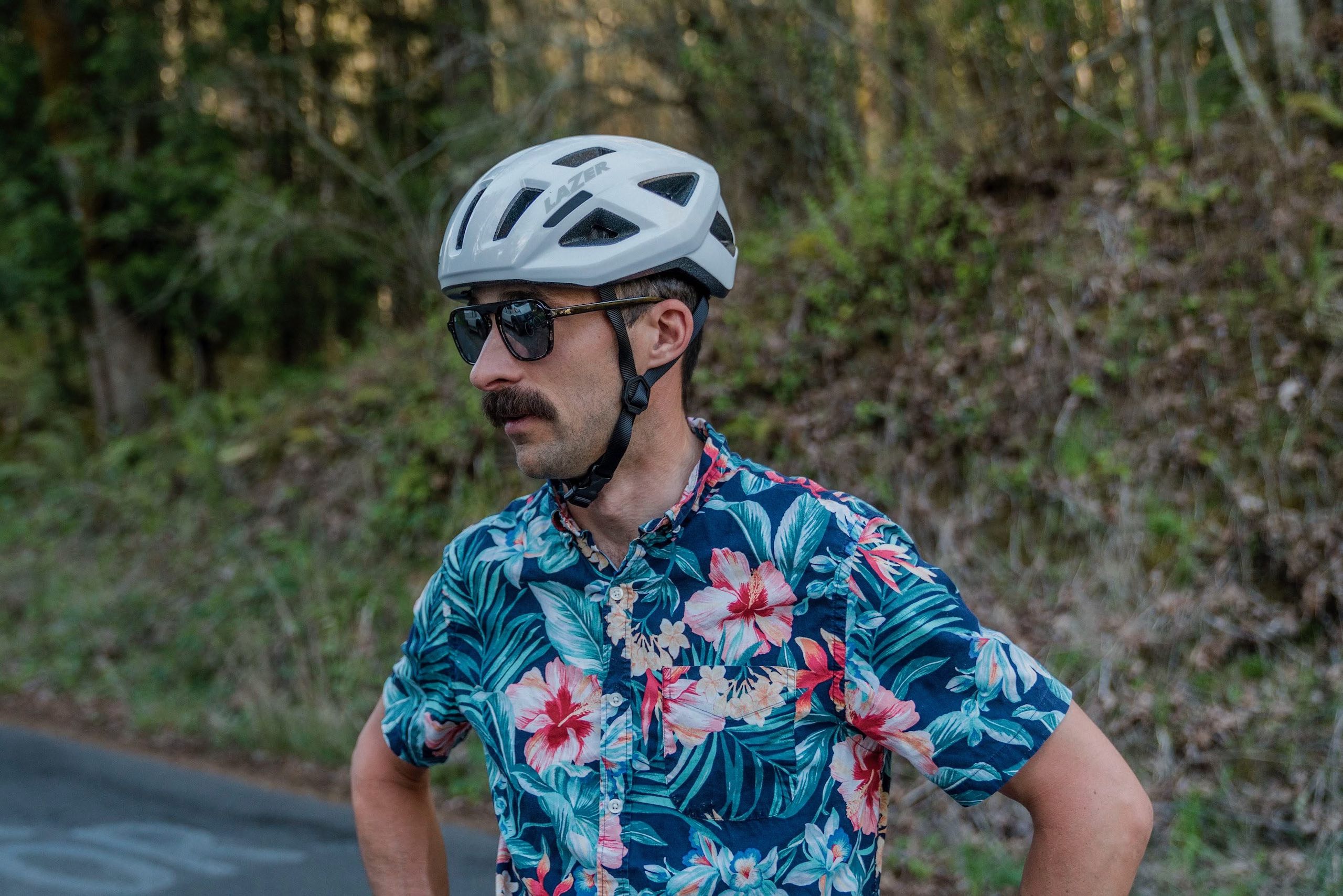
Buying Advice: How to Choose the Best Road Bike Helmet
Road bike helmets meet a broad spectrum of needs, from keeping us comfortable to looking and performing our best and, of course, protecting us during the worst of the worst. We have analyzed and tested a diverse lineup to help you understand the options and pick the best helmet for your next ride.
Types of Road Bike Helmets
While you can road bike in just about any helmet you choose, helmets designed specifically for road cycling are the best fit for the task. Road bike helmets aim to balance sleek and streamlined designs with lightweight constructions and good ventilation while remaining protective in the event of a crash and head impact.
They generally fall into two categories: lightweight and vented or aero. They differ from their mountain bike counterparts mostly by their lighter weight, reduced head coverage, and lack of a visor. If you’re looking for the best mountain bike helmet, don’t worry, we’ve tested those too.
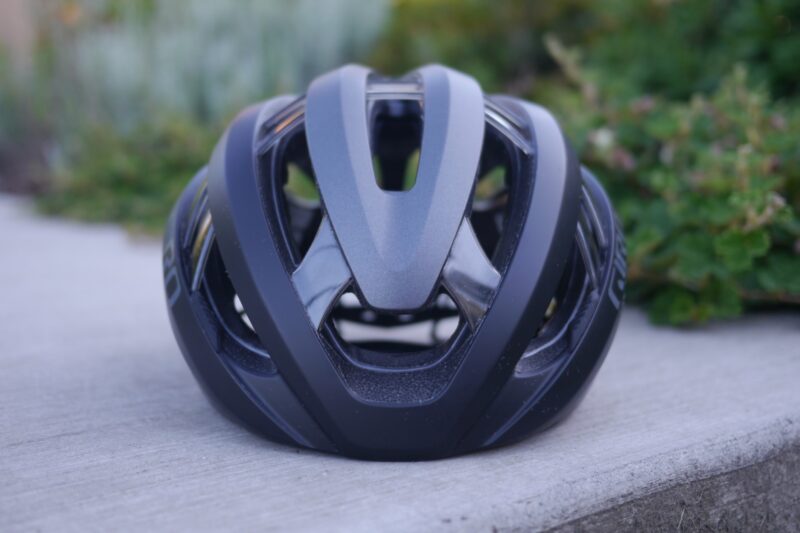
Lightweight-Vented Road Bike Helmets
This is the more common style of helmet that the majority of road cyclists choose for most types of riding. Airflow will be better in a lightweight-vented helmet than in an aero helmet since air is directed through vents and onto your scalp rather than along the helmet’s surface. Riders who sweat more than average, spend a lot of time climbing, or often ride in extreme heat will benefit more from the superior cooling power of a lightweight-vented helmet. Of the models we tested, the POC Cytal stood out as the best-ventilated of the bunch.
Can’t decide between an aero or a lightweight-vented helmet? The good news is that most brands have begun to incorporate aero shaping into the back and sides of lightweight-vented helmets without compromising ventilation at the front and top of the helmet, where it is most needed. The Giro Aries Spherical, Kask Protone Icon, and Trek Velocis MIPS are great examples of super lightweight and well-ventilated options.
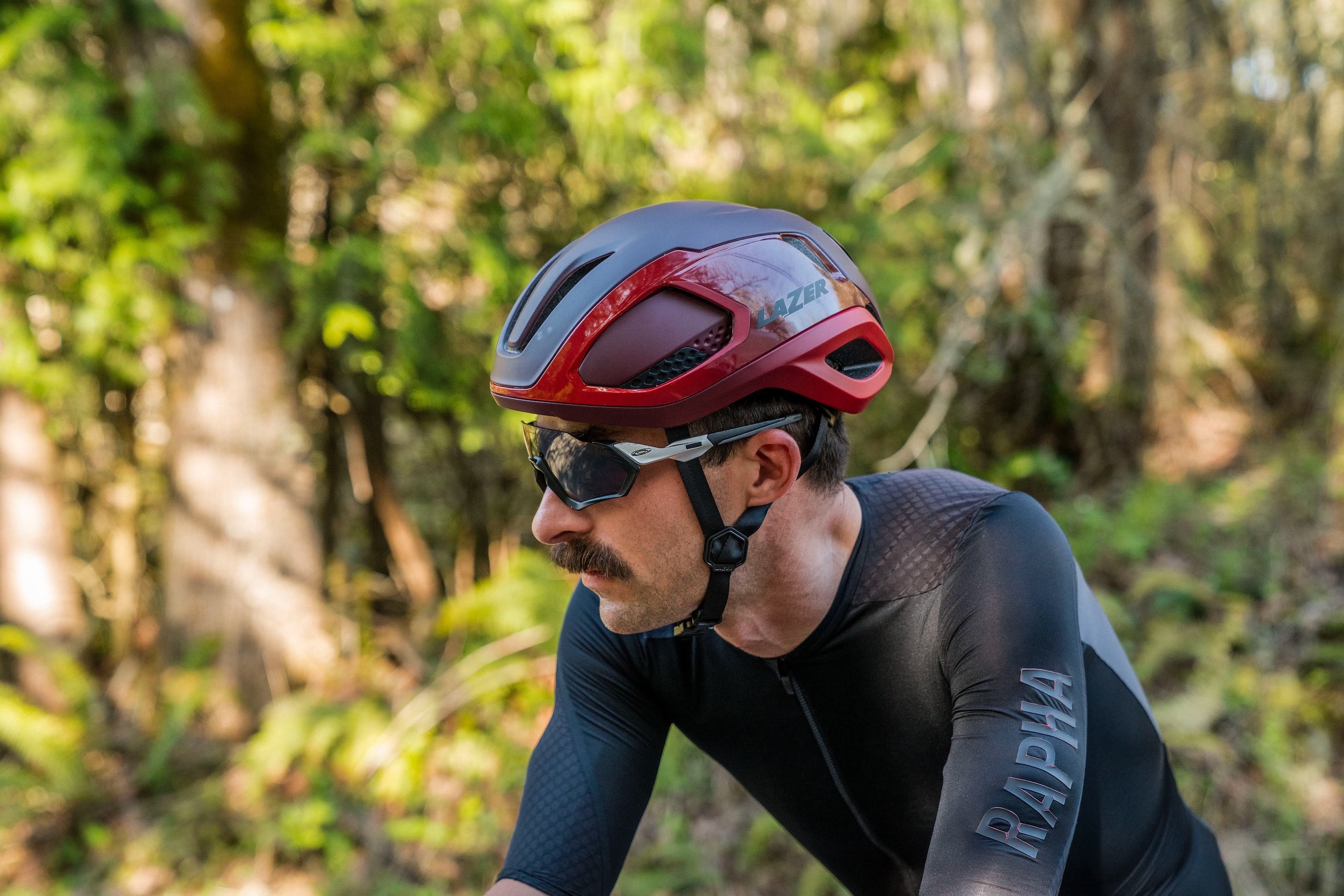
Aero Road Bike Helmets
Most helmet manufacturers offer an aerodynamically shaped helmet that is designed to smooth airflow over your head, resulting in faster speeds on the bike at the same level of rider effort. Keep in mind that these aerodynamic gains do typically incur marginal losses in ventilation, and add some weight to the helmet. Aero helmets may also perform better in a temperate or cold climate, as they shield your head more from cold air and light rainfall.
While most aerodynamic equipment is a massive commitment of resources, an aero helmet can reduce your aero drag without draining your coffers. Research also indicates that dollar for dollar, an aero helmet is a more effective way to reduce aero drag than frames and wheels. Models like the Giro Eclipse Spherical, Lazer Vento KinetiCore, Specialized S-Works Evade 3, and the Specialized Propero 4 are good examples of aero road bike helmets.

Helmet Fit
Helmet fit will be personal to everyone. Some helmets will feel more oval in shape, and others more circular; some will feel more luxurious, and others more minimal. With some adjustment and fine-tuning, you should be able to achieve a comfortable and safe fit with any helmet in this guide, provided it’s the correct size.
A great first step is to measure the circumference of your head just above your ears in centimeters. Taking this step will quantify which size helmet you will be able to wear in each model. When you looking at helmets, look for the centimeter range corresponding to each size in the manufacturer’s size guide or printed on the box. There is no standard centimeter range for “small”, “medium”, and “large” sizes, so knowing the actual centimeter sizing of your head can save some time here. Whenever possible, it is always a good idea to try a helmet on before buying to ensure it fits properly.
Once the correct size is chosen and the retention system, tightening mechanism, and strap systems are adjusted to your needs, you will ideally have a snug but accommodating fit without any pressure points. The helmet should also cover your temples easily and come close to the tops of your ears. When swaying your head side-to-side, the helmet should stay firmly in place.
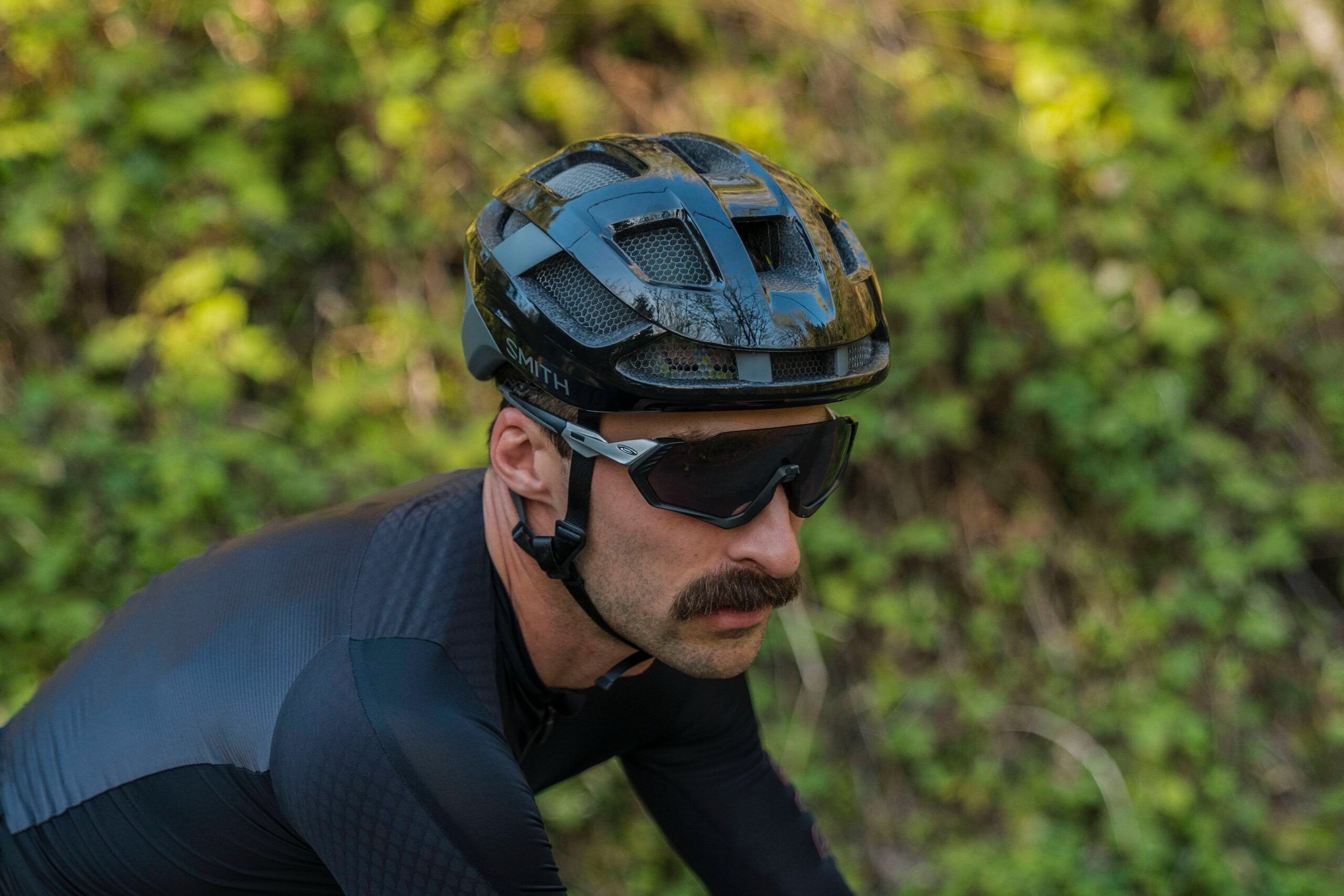
Chin Straps
A helmet’s strap system connects the helmet’s straps beneath your chin and keeps the helmet in place during a crash. When adjusted properly, the outer junctions of the straps by the ears should sit comfortably below your ear lobes, and both sections of the strap should be as close as possible to your head to minimize flapping in the wind.
Under your chin, the strap should fit so that you can slide two fingers between the bottom of your chin and the strap, ensuring you can breathe comfortably. The chin strap is always adjustable, so it can be dialed in to fit the user’s head shape. The straps around the ears are typically also adjustable, though the systems vary slightly between brands and models to allow the user to position them to avoid unwanted ear contact.
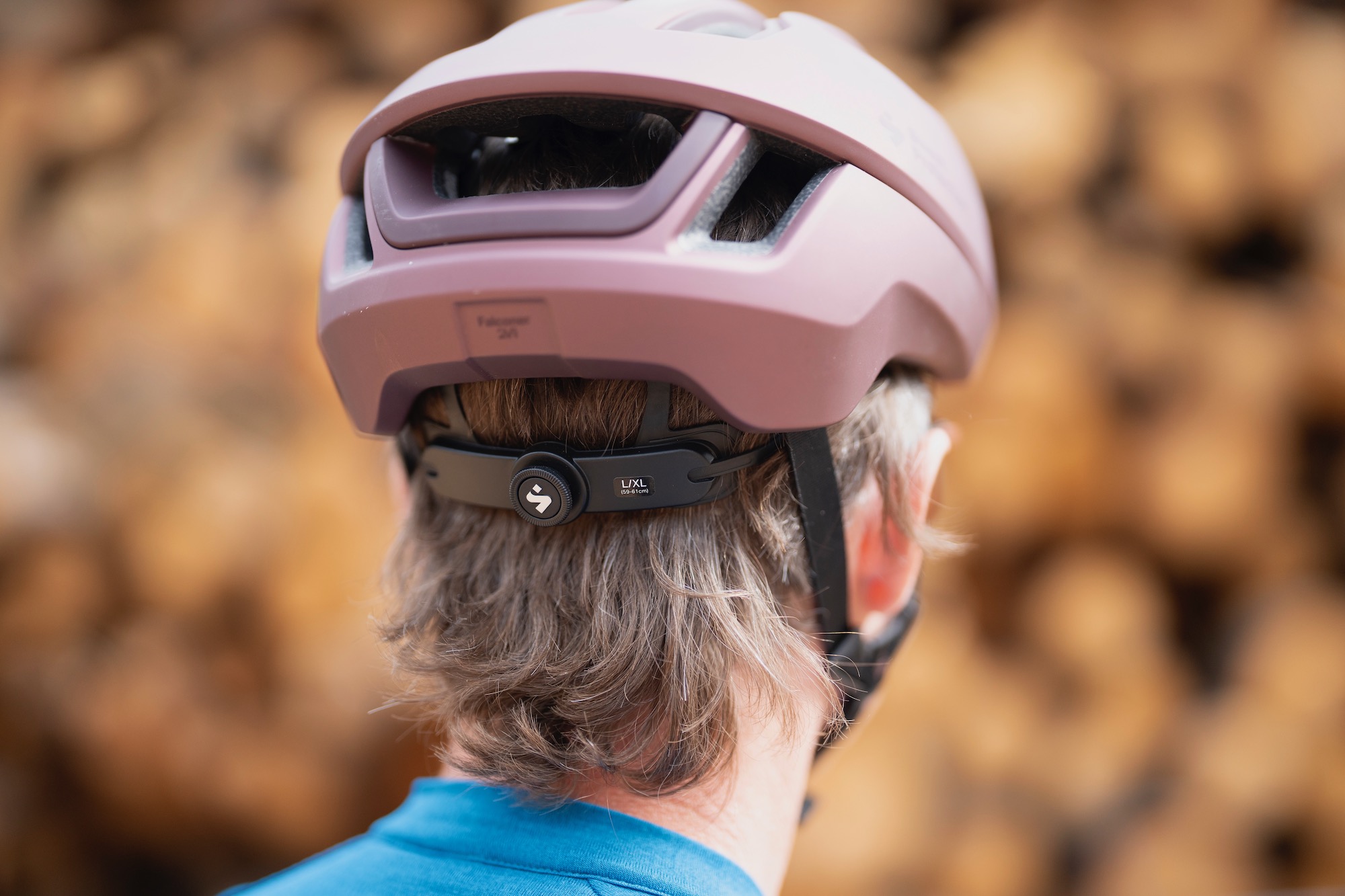
Adjustable Harness or Retention System
The adjustment harness/retention system counters the chin straps and provides a secure hold at the back of your head, with many modern helmets wrapping tension around the entire head. Most helmets enable adjustment of the entire retention system at the rear interior of the helmet.
By adjusting where the retention system is anchored inside the helmet, you can dramatically change the interior volume and fore/aft tilt of the helmet to perfect the fit for your specific head shape. Ideally, by adjusting the retention system correctly, you will place the adjustable harness and its tightening mechanism so that it cradles the base of your occipital lobe.
Tightening Mechanism
You’ll use the tightening mechanism on the adjustment harness every time you put on or remove the helmet to fine-tune the fit. Some companies use BOA dials like you’ll find on many shoes or some other sort of simple twist dial. Other companies use more complicated mechanisms with varying success. This part of the helmet just needs to work, and its operation should be intuitive, fast, and quiet while performing the important function of keeping the helmet snug, secure, and comfortable on your head.

Rotational Impact Protection
Rotational impact protection systems have become relatively standard in cycling helmets over the past decade or so. MIPS (Multi-directional Impact Protection System) is the industry leader and the most common form of rotational impact protection. Most brands have licensed some iteration of this technology or developed a proprietary system to achieve similar results.
The goal with MIPS and similar systems is to create a low-friction layer, or slip-plane, within the helmet that allows the outer layer of the helmet to move 10-15mm during angled impacts, thus limiting the rotational force applied to your head/brain, and reducing the chance of a concussion.
MIPS itself now takes various forms and iterations, including a more standard MIPS liner, MIPS Spherical (dual shells that function like a ball and socket), MIPS Integra, and MIPS Air, which incorporates the technology into the pads themselves.
Other brands have created their own technologies that aim to provide the same type of rotational impact protection with different designs. Lazer has developed KinetiCore, which involves small isolated blocks of EPS foam within the helmet that are designed to crush and crumple on impact and is used in the Tonic KinetiCore and the Vento KinetiCore.
Bontrager uses a cellular structure called WaveCel in some of their helmets that is intended to work in much the same way. Similarly, Smith incorporates Koroyd into many of its helmets, including the Trace MIPS, which is a cellular structure like WaveCel that is meant to crush and crumple on impact while allowing air to pass through.
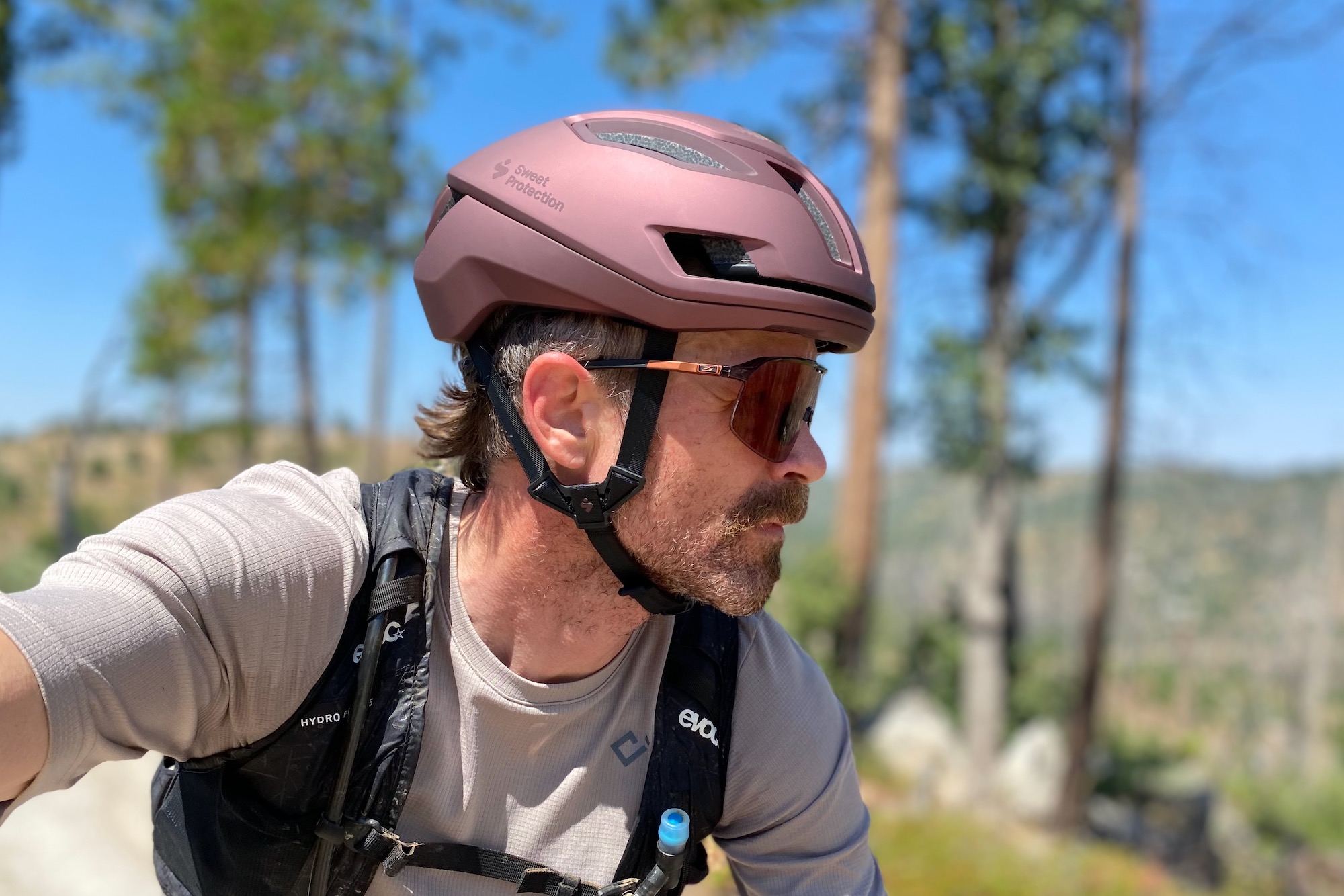
Safety Rating and Certifications
All helmets must pass tests to be certified for sale in their respective countries. Since 1999 in the US, the Consumer Products Safety Commission (CPSC) is the certifying agency that must approve a helmet before it can be legally sold. In Europe, the cycling standard is CE-EN1078. Most modern helmets that are sold in multiple markets pass both certifications. In some cases, cheap products purchased online may not meet these certification standards, which is why we recommend that cyclists always buy reputable name-brand helmets.
Since we do not perform impact testing on the helmets we test and review, we have come to rely on the independent test lab at Virginia Tech for quantifiable data regarding the protective qualities of bicycle helmets. As of the publication date of this article, they have tested 250 different road, mountain, and commuter cycling helmets. Using specialized equipment, they evaluate each helmet using 24 impact tests.
They measure a helmet’s ability to decrease both linear acceleration and rotational velocity to determine how well each model may reduce the risk of concussion. Their numerical results translate to a star rating, 1-5, with 5 being the highest and most protective. The lab has not tested every model on the market or included in our review, but many of the models listed above have been rated. In fact, the POC Cytal ranks as the safest road biking helmet they’ve ever tested, as well as the fifth-safest overall helmet.
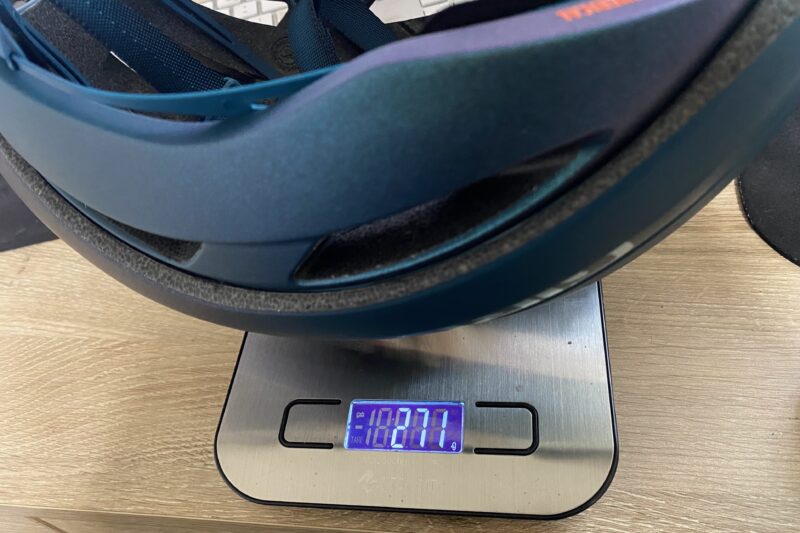
Weight
As with most things in the sport of road cycling, weight is a consideration for helmets as well. While it is not the end all be all, lighter is generally considered better if all other things are equal, and helmets must pass the same certification tests irrespective of weight. The weight of the helmets we tested varies between 230 grams and 350 grams, so the differences between them may seem pretty significant.
In reality, a 350-gram helmet is still relatively lightweight, though it will feel slightly heavier on the head than a featherlight 230-gram model. That said, riders focused on endurance riding or road racing will generally be most concerned with weight, as even an extra 50 grams can increase neck strain with each passing hour on the bike.
Function Over Form?
Even though a bike helmet is a great example of form following function, it’s important to like the way your helmet looks. Consider the arrangement and finish of the helmet’s vents. Vents should be arranged in a way that’s pleasing to your eye, augmenting the helmet’s overall shape. Vents should also be finished cleanly, without rough edges of foam visible.
Also, consider the helmet’s overall shape and profile. Does the helmet look overly bulbous once you have put it on, or does it have a compact, streamlined form? Remember that the back of the helmet is the portion most visible to people when you are riding together. It’s worth noting that brightly colored helmets, including silver and white, also increase your visibility to motorists while you ride.

Accessory and Eyewear Integration
Integration with accessories is becoming more common in helmets. Many helmets have dedicated spaces for storing cycling sunglasses, with strategically placed ventilation holes and, in some cases, integrated grippers to cling to the arms of sunglasses. Others enable lights to be clipped to the helmet at the back and sides for night riding. Specialized has developed the ANGI (Angular and G-Force indicator) system, which is a crash detection sensor that can be purchased separately and added to your helmet. ANGi requires a subscription, but this little device can notify your emergency contacts in the event of a crash. ABUS has also developed a sensor called QUIN that aims to function in a similar way.
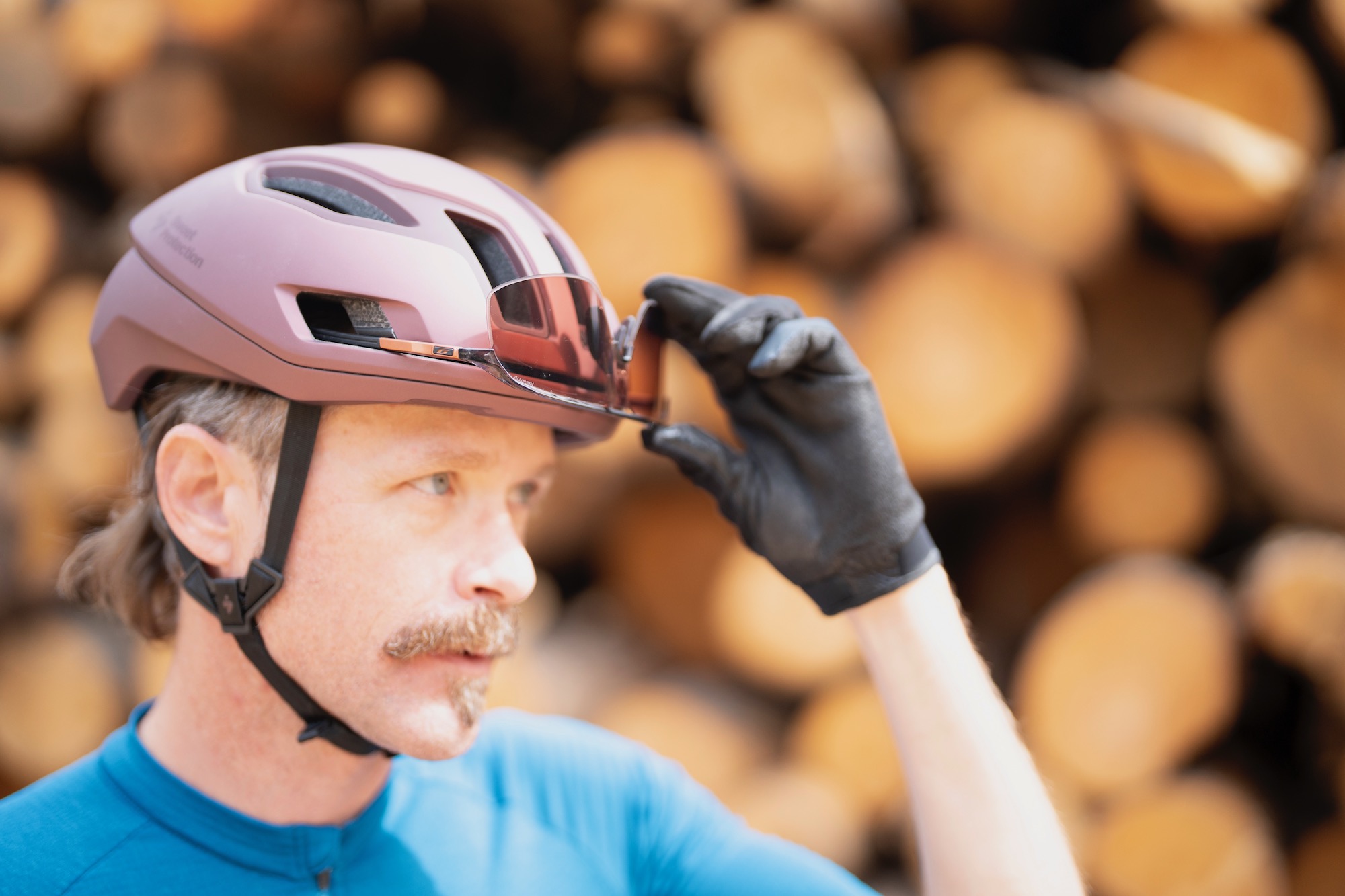
Price & Value
The helmets we tested vary in price from $80 up to $350. While spending top dollar may get you more premium finishes, better ventilation, and fancier features, even the least expensive helmets we tested will serve you well if you’re operating on a tighter budget. In fact, studies have shown that spending more doesn’t necessarily correlate with better protection. Regardless of price, the most important thing is to get a helmet that fits properly and to wear it whenever you throw your leg over the bike.
It’s also worth mentioning that road bike helmets can often be found at discounted prices if you’re shopping late in the season or don’t mind wearing last year’s color options.
Budget
If you’re a recreational or more casual rider, or you simply aren’t concerned with having the flashiest and most expensive gear, then a helmet like the Lazer Tonic KinetiCore ($80) will get the job done at a fraction of the cost of the more expensive options. While this helmets isn’t as aerodynamic, stylish, or well-ventilated as some of their more expensive counterparts, it is still comfortable and protective.
Mid-Tier
Between roughly $150 and $200, you typically find more refined finishes, a boost in ventilation, improved aesthetics, and eyewear integration. It takes more time and effort to design and manufacture helmets with greater cooling properties and ensure the craftsmanship and finish meet a higher standard, leading to an increase in price compared to the budget options. Here, we also see the use of more advanced/streamlined MIPS systems that reduce bulk and don’t impede airflow.
The Specialized Propero 4 ($230) and the Sweet Protection Fluxer MIPS ($250) are a couple of our mid-priced favorites. The Propero scored points with us for its slick looks, aero design, and similar ventilation attributes of its more expensive siblings in a more affordable package. The Fluxer MIPS stood out less for its looks and more for its great ventilation and high level of versatility. Both helmets also happen to cost $100 less than some of the premium options we tested.
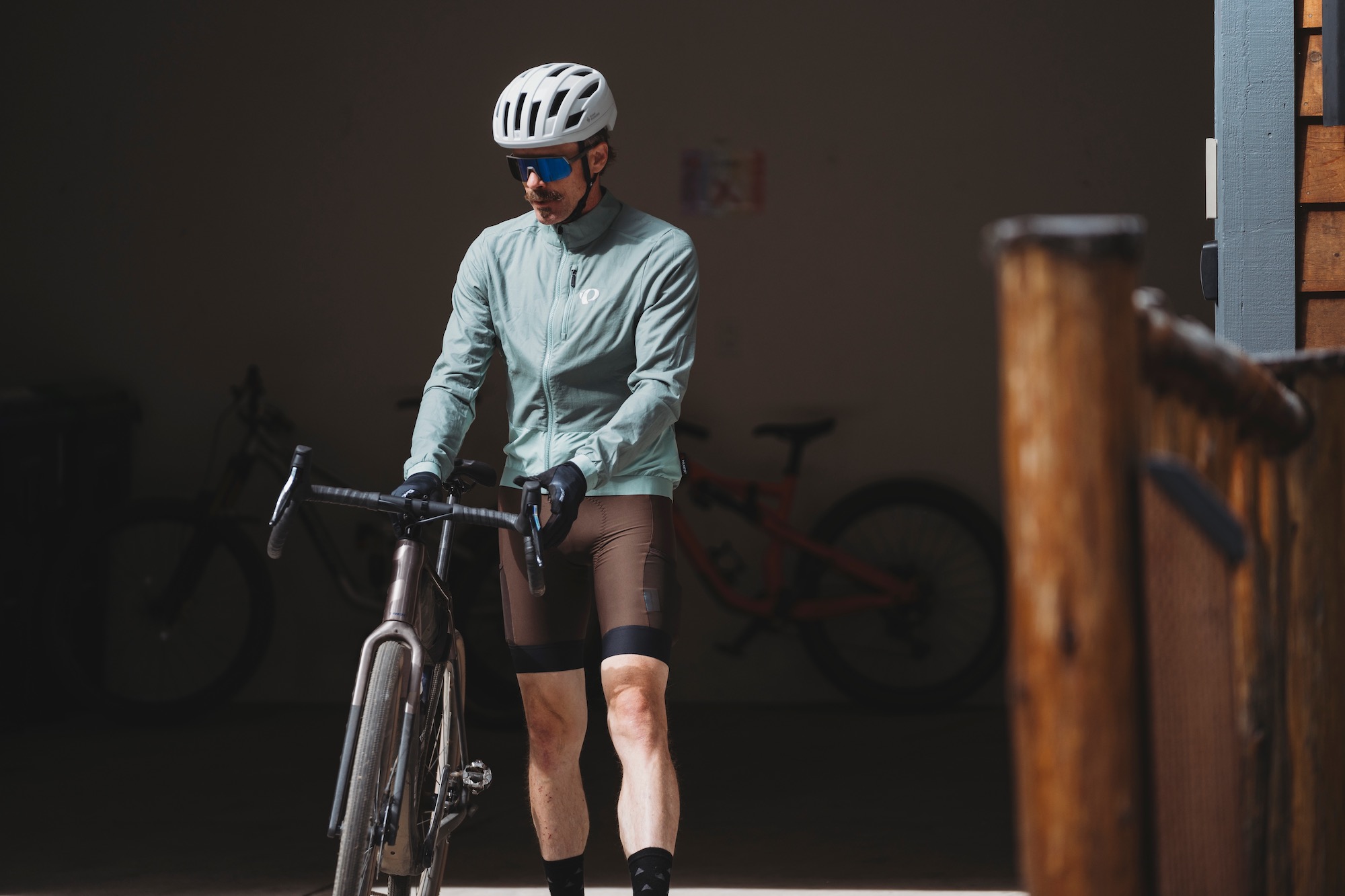
Premium
Above the $250 mark, we get into premium road bike helmet territory. Here, we find great fits, excellent ventilation, full feature sets, and some models with designs intended to provide specific performance attributes that may justify the higher price tag for some riders. At the high-end of the market is where you’ll find the majority of aerodynamic helmets. Designing helmets to reduce drag and improve efficiency takes a lot of effort and testing, which is reflected in the higher price. Models like the Specialized Evade 3 ($300) and the Lazer Vento KinetiCore ($300) have been purpose-built to smooth airflow over the helmet to save you precious watts and potentially a little time on the clock.
Other premium helmets prioritize ventilation, and the breeziest helmets we tested also happen to be among the most expensive. Balancing impressive airflow with a high level of protection is challenging but doable, and the resulting costs associated with design, engineering, and production are a bit higher. The Specialized Prevail 3 ($300) is a prime example. This helmet’s wide-open vents allow the most airflow of any helmet we’ve tested, yet the unique “Air Cage” structure and MIPS Air system place it among the top-performing helmets in Virginia Tech testing. Similarly, the Giro Aries Spherical ($350) and the POC Cytal ($350) are some of the most comfortable helmets we’ve ever tried.
Frequently Asked Questions
Any type of cycling can be very expensive, and the costs aren’t limited to the latest bikes and components. Even a fancy helmet can set you back several hundred dollars. It’s hard to put a price tag on head protection, however, but thankfully, many brands make budget-friendly models that perform nearly as well as their more expensive counterparts.
They may be slightly heavier, not as well-ventilated, and perhaps not as stylish, but even a less expensive helmet will protect your head much better than none at all. And, even less expensive models must pass the same certification tests as the high-end models, and many of them perform better in Virginia Tech testing. So, just because a helmet doesn’t cost as much doesn’t mean that you have to sacrifice head protection in most cases.
In fact, one helmet safety study found that price and the level of protection do not have a direct correlation.
A properly fitting helmet is critical to your comfort and the helmet’s protective efficacy in the event of a crash. The first thing you need to do is get the correct shell size. Trying a helmet on is a surefire way to find the right size, so we recommend doing that whenever possible. Alternatively, measuring your head will show you what size you need. Using a soft measuring tape, measure the circumference of your head just above the ears to find your size in centimeters.
If you don’t have a soft measuring tape, a piece of string and a ruler can be used instead. This measurement should fall within the recommended size range of one of a helmet’s multiple shell sizes. Helmet manufacturers have size charts on their websites where you can find the sizing information for each specific model.
Rotational impact protection systems like MIPS have been around for the past decade or so and have become pretty ubiquitous among all types of cycling helmets. Most, but not all, helmets these days come with some form of MIPS or another design that is intended to work similarly. While there is some speculation about the effectiveness of these systems, research suggests that they do help reduce the rotational forces that reach the brain in certain types of impacts.
Now, even a helmet without a rotational impact protection system will protect your head from direct impact and help to dissipate impact forces. That said, we are happy to have additional safety features built into helmets, no matter how small the added protection may be. So, the answer is no, you don’t need MIPS or something similar in your helmet, but we’ll take all the protection we can get.
Road helmets are used for gravel and mountain bike riding. Consider the clothes you’re wearing, and if the answer is spandex, then a road-style bike helmet may be the most appropriate. While there are some helmets marketed specifically toward gravel, the majority of gravel riders use road bike helmets because the weight, ventilation, and protection needs are so similar.
For mountain biking, road helmets are most often used for cross-country riding and racing. Watch any high-level cross-country mountain bike race, and you’ll see nearly every rider wearing a road-style helmet. Again, weight and ventilation are prioritized, and that’s where road bike helmets have an edge over traditional half-shell mountain bike lids.
Most mountain bikers who ride more aggressively or in more challenging terrain, however, typically opt for the extended coverage of modern half-shell helmets. These helmets cover more of the head and may provide extra protection for certain riding styles and situations. The addition of a visor is another feature that many mountain bikers appreciate.
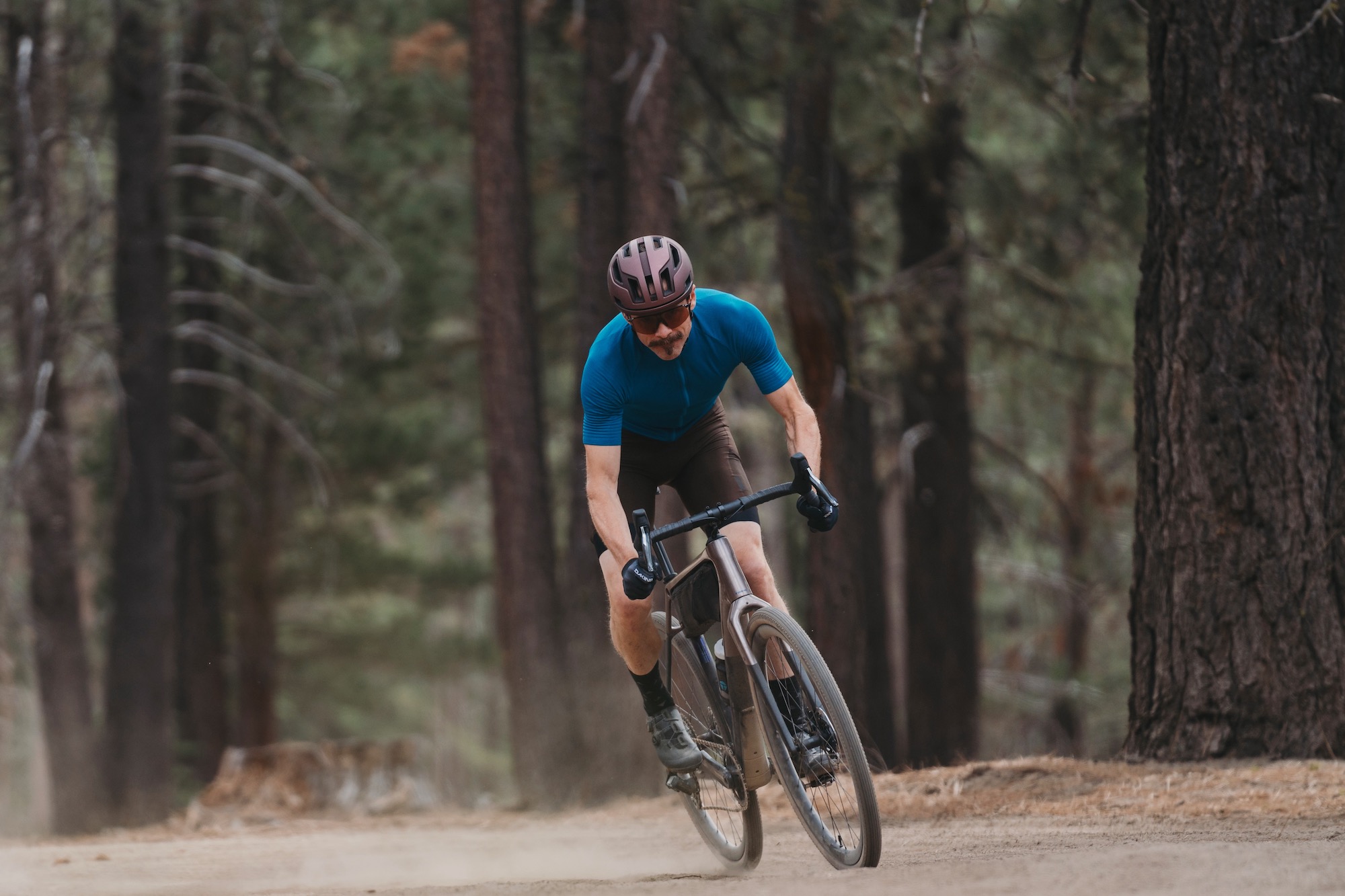
Aerodynamic helmets are designed to allow air to move more freely around and over the helmet with the goal of reducing drag. They do this by having smoother surfaces and more sculpted designs than their all-around counterparts. An aero helmet will almost always have less drag than a helmet that isn’t specifically designed to be super aerodynamic, and most have undergone extensive wind tunnel testing to ensure they work as intended.
In general, an aero helmet will provide a marginal gain in efficiency, which, when added up over time can result in a more substantial savings of time and energy. That said, aero helmets tend to have a slight reduction in ventilation and a slight increase in weight, comparatively, so that is something to be considered. Still, if saving a few watts and seconds is important to you, an aero helmet can help you do that, and it costs a lot less than an aero bike or aero wheels.
Yes. Helmets are designed to protect your head by absorbing impact forces through crushing and cracking of the EPS foam and outer shell. Any time your helmeted head impacts the ground, the structural integrity and protective qualities of the helmet can be compromised and it should be replaced.
Even if there is no visible damage to the foam or any other part of the helmet, there may be damage that cannot be seen. It is always recommended that you replace your helmet after it has taken an impact. Some brands even offer crash replacements at a discounted rate.
Related Content

The Best Hitch Bike Racks of 2025
We tested the best hitch bike racks for 2025 with options for every budget. Top picks include Thule, Kuat, RockyMounts, and more.
